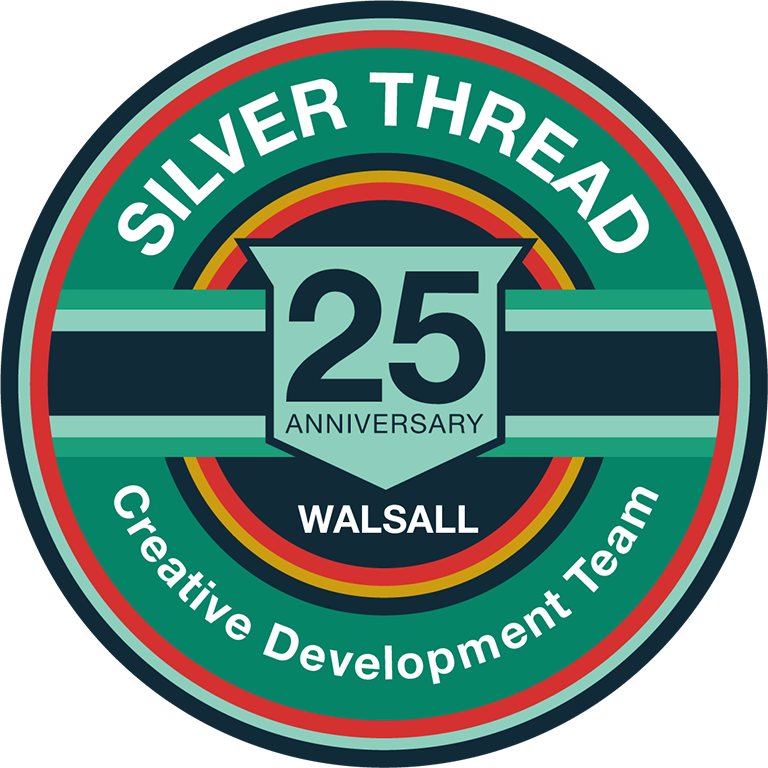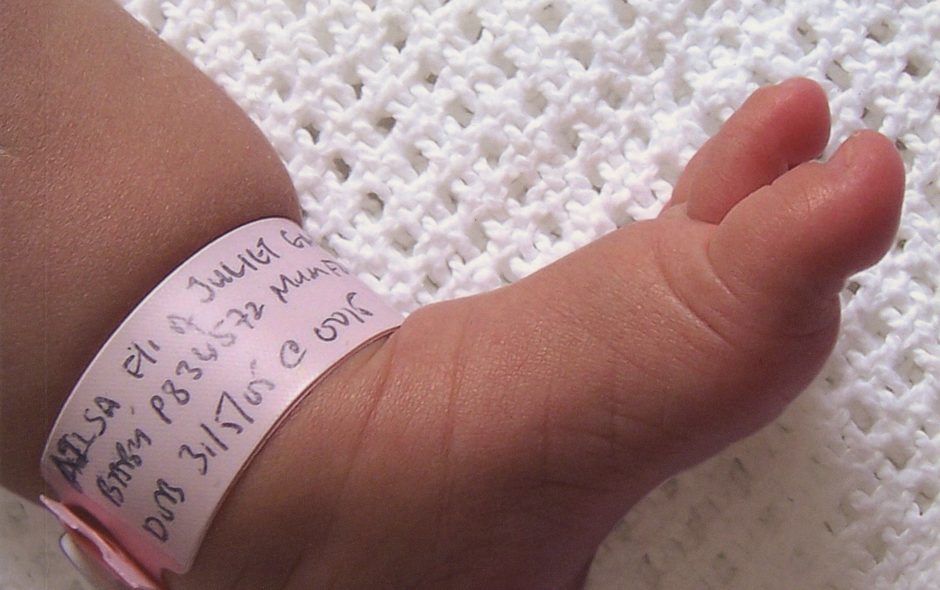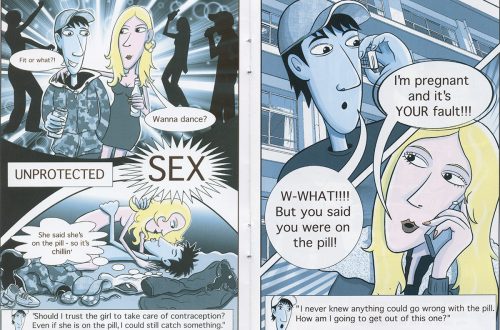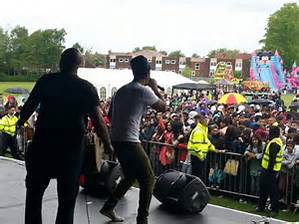“It was about things that parents could do or recreate at home for 50p. They couldn’t necessarily do a professional puppet show but they could make a puppet out of something that their child had spilt their dinner down, or their tights that they’d ripped, or the single glove when they’d lost the other one.”
“Mix It Up and Make It Nice” was a three-year project exploring parent-child communication and the development of self-esteem in young children. The Team worked in partnership with Walsall Primary Care Trust and the Early Years Unit to develop participatory arts projects to encourage parents of young children to explore new ways to communicate, build positive self-esteem and implement change in their own relationships with their children.
The project was funded by the Neighbourhood Renewal Fund via the Local Strategic Partnership, and resulted in many different workshops and projects across the borough involving puppets, shadow shows, story-telling, song writing, singing, photography and a wide range of visual arts.
A range of arts workers delivered the diverse programme, all with excellent communication skills and a wealth of experience, working with Parent and Toddler groups, baby clinics, library cradle clubs, family centres and health centres.
The first part of the project was the research phase, talking to lots of different parents and gathering good advice, tips and messages about bringing up young children and identifying common areas that are tough to deal with. One of the key elements in the workshops was to create a friendly and relaxed atmosphere enabling the artsworkers to gather honest and frank answers. The next phase promoted these positive messages and explored ways of dealing with “trouble spots.”
Sam Hale, lead artist and development worker on the project, described how involvement in participatory arts was “…an effective catalyst in stimulating debate and discussion around parenting. Participants saw and felt the way their children reacted to new situations and hopefully it will have given parents confidence to try out similar activities at home.”
Research has shown that the quality of communication between parent and child is key to developing positive self-esteem in children. Steering group member Cath Boneham, at the time a Health Promotion officer for the Primary Care Trust said:
“Positive communication between a parent and a child is a way of bonding. Children need to learn vocabulary to talk about different aspects of their life, so they can talk about their feelings or activities. But it was also important to teach the parents to communicate and realise that they’re a key channel of learning for their child. They need to pick up on feelings of the child through their body language so if, for example, they’re angry they can give them the vocabulary to express this without getting frustrated. Children need to have an awareness of what’s going on around them, helping them to learn and develop. Feelings won’t always be positive, and as a parent you need to be able to help them deal with it.”
Artist Sam Hale concluded: “It was about things that parents could do or recreate at home for 50p. They couldn’t necessarily do a professional puppet show but they could make a puppet out of something that their child had spilt their dinner down, or their tights that they’d ripped, or the single glove when they’d lost the other one.”
Case Study – Blakenall Teenage Club
In Spring 2003 as part of Mix it up Make it nice, members of Blakenall teenage club created their own hand-made interactive children’s book. The project aimed to give an opportunity for young parents to explore the way they communicate with their children now and how they could in the future at different stages in their life. Although we focussed on communication, many parenting issues were discussed informally as they came up during the sessions.
The Group
The weekly Blakenall Teenage Club started in January 2001 and was funded by Sure Start Plus and Blakenall Sure Start. It was a midwife-led project run by Community Midwife Lin Gostling with the support of other community midwives as well as other health professionals, who’d identified a need to give parent education and support to both young pregnant girls and newly delivered mothers.
What did we do?
Deb Rogers from Cultural Sisters and Alison Strain from the Team worked with 22 parents for six weeks. We explored how the parents communicated with their children. The age range of the babies at the start of the project was between 2 weeks and 2 years, so more experienced parents were able to share experiences with new parents in an informal, light-hearted and non-threatening way. We then moved on to thinking about the greatest gift they as parents could give to their child and participants were asked to make props to symbolise this – for example, a heart to symbolise all the love in the world. Some parents just chose to make something for their children to play with like a rattle. Photographer Ming de Nasty photographed parents and children with their prop.
The parents were interviewed about how they communicated with their child now, how they planned to in the future and how they hoped to develop high self-esteem in their children.
More than half of the parents then went onto create individual books about their child using the props and the photographs as source material. The books were all very different and covered areas of child development: self-identity, exploring the physical world, emotional development and intellectual development. Each page had an interactive activity for the parent and child to play with, encouraging communication and exploration. The books showed the young parents an example of how playing with their child can help with their child’s development and how their involvement, encouragement and praise could ultimately build their child’s self-esteem for the future. All the participants were also given books for their babies and toddlers donated by the Early Years unit to the project.
One of the main challenges was to do with health and safety, the materials used had to be strong and robust enough to be used again and again and not present a choking hazard.
Best bit was the support – not only did we have fantastic community midwives led by Lin, we also had artsworkers with experience of working with teenage parents and parenting trainers attending every session informally discussing issues that came up. We had a large space to work in and crèche workers who looked after the children alongside the parents as they created their books or in the play area in the same room.
Petrina and Ben made a book for two-year-old Jordan and new arrival Joshua. This is what Petrina had to say about the project:
“The project made us all talk together to figure out ideas, before I never really talked to people I didn’t know. It’s made Ben and I communicate a bit better with Jordan, with the book we had to talk to him to tell him how it worked – if we’d just given it to him he’d think what do I do with this? If you don’t talk to them they can’t talk to you – you need to talk to them for their development so they understand. You have to use a different language, not big complicated words and if he doesn’t understand don’t shout at him even if you’ve got to explain it 4 or 5 times.”
Legacy
The project was captured in a report which included photographs and contributions from 22 young parents. This was used as a giveaway by health professionals as a positive encouragement for other young parents to think about their own children’s development and how they communicate with their children to build confidence and help with their child’s development. The project as a whole helped grow Make It Nice Together which was a book and mini art kit given out to parents borough wide to have fun making with their child.








